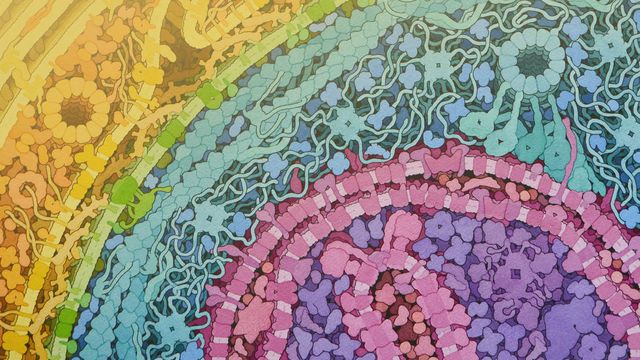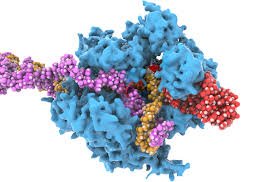the case against prisons
Title: The Case Against Prisons: Rethinking Punishment and Rehabilitation

Introduction
Prisons have long been a cornerstone of modern criminal justice systems. However, their efficacy as a means of punishment and rehabilitation is increasingly coming under scrutiny. In this op-ed, we will examine the historical context of prisons, highlighting that they are, in fact, a relatively new concept. Furthermore, we will explore alternative approaches to addressing criminal behavior, focusing on fines, reeducation, reintegration, and mental health support. Finally, we will discuss the need for upstream interventions in dealing with illegal activities that are often deemed necessary in societies, such as prostitution and drug dealing.
1. The history of prisons and their emergence as a primary form of punishment
The modern prison system has its roots in various ancient and medieval systems of punishment. However, it is essential to understand that the concept of incarceration as a primary form of punishment has only emerged in the last few centuries. To fully grasp the implications of this transformation, we need to delve into the historical context and evolution of punishment.
Before the emergence of prisons, societies relied on a range of other punitive measures to address criminal behavior. These included corporal punishment, public humiliation, mutilation, and exile. During the medieval period, jails existed, but they were not primarily used as punitive institutions; rather, they served as holding cells for individuals awaiting trial or more severe punishments.
In the early modern period, the notion of incarceration as a form of punishment began to take root. One of the first examples of this was the Bridewell in London, established in 1553 as a workhouse for the poor and a house of correction for petty offenders. However, it wasn’t until the 18th and 19th centuries that the modern prison system began to develop. Several factors contributed to this shift, including the Enlightenment’s influence, which emphasized rationality and the potential for human improvement, and the growing societal concerns about the morality and effectiveness of corporal punishment.
The emergence of the penitentiary system in the United States, with its emphasis on isolation, discipline, and labor, further cemented the role of prisons as the primary form of punishment. This system was influenced by the Quakers’ belief in the possibility of redemption and reform, leading to the construction of the Eastern State Penitentiary in Pennsylvania in 1829. This model of punishment and rehabilitation became popular and was soon adopted by other countries around the world.
As industrialization and urbanization progressed, prisons became a convenient solution for dealing with the rapidly growing population and increased crime rates. The concept of imprisonment as a means of rehabilitation and reform was further bolstered by the emergence of criminology as a scientific discipline in the late 19th and early 20th centuries, which sought to understand and address the root causes of criminal behavior.
Over time, prisons have become the default response to crime, despite their relatively recent history as the predominant form of punishment. This shift has had significant consequences for the way societies perceive and address criminal behavior. The reliance on incarceration has led to a focus on punishment and containment rather than addressing the root causes of crime and investing in prevention and rehabilitation.
In conclusion, the history of prisons and their emergence as a primary form of punishment is a relatively recent development in the broader context of human history. It is essential to understand this historical background to question the efficacy of prisons as a means of punishment and rehabilitation and to consider alternative approaches that might better serve the goals of justice, safety, and social harmony.
2. The issues with imprisoning people as a primary form of punishment
While prisons have become the default response to crime, there are significant problems associated with using imprisonment as a primary form of punishment. The negative consequences of incarceration extend not only to individuals but also to families, communities, and society as a whole.
Firstly, imprisonment has a profoundly negative impact on individuals’ mental and physical health. The isolation, lack of privacy, and restricted personal autonomy can lead to increased rates of depression, anxiety, and other mental health issues. Furthermore, the harsh and often violent environment within prisons exposes individuals to trauma and victimization, exacerbating existing mental health problems or creating new ones.
Imprisonment also has detrimental effects on families and communities. When a family member is incarcerated, their loved ones often face emotional turmoil, financial hardship, and social stigma. Children with incarcerated parents are particularly vulnerable, as they are at a higher risk of experiencing emotional, behavioral, and educational challenges. In addition, the removal of productive members from communities can weaken social ties, contribute to economic instability, and perpetuate cycles of crime and poverty.
Another critical issue with imprisoning people as a primary form of punishment is the high rates of recidivism. Despite the original intent of prisons to rehabilitate and reform individuals, many incarcerated individuals return to criminal behavior upon release. This failure can be attributed to several factors, including inadequate educational and vocational training, lack of support for reintegration, and the stigmatization of individuals with criminal records, which limits their employment and housing opportunities.
The significant financial burden that prisons place on taxpayers and society further highlights the issues associated with imprisonment as a primary form of punishment. The cost of maintaining prisons, providing healthcare, and addressing the consequences of recidivism can be exorbitant. These funds could be better allocated to prevention and intervention programs, such as education, mental health services, and community-based initiatives, which have been shown to be more effective in reducing crime rates and promoting social cohesion.
In conclusion, relying on imprisonment as the primary form of punishment has far-reaching negative consequences for individuals, families, communities, and society. The high rates of recidivism, the failure of prisons to effectively rehabilitate individuals, and the significant financial burden on taxpayers underscore the need to reconsider our reliance on incarceration and explore alternative approaches to addressing criminal behavior.
3. Alternative approaches to punishment and rehabilitation
As we have seen, the use of imprisonment as a primary form of punishment has numerous negative consequences. It is vital to consider alternative approaches that prioritize prevention, rehabilitation, and community support, rather than simply focusing on punishment.
One alternative to imprisonment is the increased use of fines. Fines can be a more effective and less harmful form of punishment, particularly for non-violent offenses. They can be tailored to an individual’s financial situation, ensuring that the penalty is fair and proportional to the offense. Additionally, fines do not carry the same social stigma and negative consequences associated with imprisonment, such as the disruption of families and communities.
Reeducation and reintegration programs are another crucial component of a more effective and compassionate approach to addressing criminal behavior. Such programs prioritize helping individuals develop the skills and support networks needed to re-enter society successfully. This can include vocational training, educational opportunities, and life skills development. Furthermore, reintegration programs can provide assistance with finding stable housing and employment, which are critical for reducing recidivism and promoting long-term success.
Addressing the underlying mental health issues that often contribute to criminal behavior is another essential aspect of a more effective approach to punishment and rehabilitation. This can be achieved through psychiatric and psychological interventions tailored to an individual’s specific needs. By providing appropriate mental health support, we can better address the root causes of criminal behavior and promote lasting change.
In addition to these alternatives, it is essential to recognize the need for upstream interventions to deal with illegal activities that are often deemed necessary in societies, such as prostitution and drug dealing. By decriminalizing or legalizing certain activities, providing support and resources to those involved, and focusing on harm reduction, we can alleviate the need for punitive measures and promote healthier, safer communities.
In conclusion, alternative approaches to punishment and rehabilitation that prioritize fines, reeducation, reintegration, and mental health support can lead to more effective and humane outcomes. By shifting our focus from punishment to prevention and addressing the underlying issues that contribute to criminal behavior, we can create a more just and compassionate society that ultimately benefits all of its members.
4: Addressing the “Necessary Evils” of Society and the Need for Upstream Interventions
Illegal activities, such as prostitution and drug dealing, are often seen as “necessary evils” in many societies. These activities can serve as coping mechanisms or survival strategies for marginalized individuals who face limited options due to systemic inequalities, poverty, and lack of access to education, employment, and social services. As such, it is crucial to shift our focus from punishing those involved in these activities to addressing the root causes and societal factors that drive them.
One way to address these underlying issues is through upstream interventions, which focus on prevention and harm reduction rather than punitive measures. For instance, the decriminalization of drug use and the implementation of harm reduction strategies, such as needle exchange programs and supervised injection sites, can lead to a reduction in drug-related crime, overdoses, and the transmission of infectious diseases. By treating drug addiction as a public health issue rather than a criminal matter, we can better support those struggling with addiction and minimize the negative consequences associated with drug use.
Similarly, the legalization and regulation of sex work can have numerous benefits for those involved in the industry and society as a whole. By treating sex work as a legitimate form of labor, we can ensure that sex workers have access to the same labor protections, healthcare, and social services as other workers. This approach can help reduce the stigma and marginalization faced by sex workers, improve their working conditions, and make it easier for them to report violence or exploitation without fear of legal repercussions.
In addition to these specific interventions, broader systemic changes are necessary to address the root causes of criminal behavior. This can include increasing access to education, affordable housing, and economic opportunities, as well as implementing policies that reduce income inequality and promote social inclusion. By investing in these upstream interventions, we can create a more equitable society that addresses the underlying factors that drive individuals to engage in illegal activities and reduces the need for punitive measures such as imprisonment.
In conclusion, addressing the “necessary evils” of society and the need for upstream interventions requires a fundamental shift in our approach to criminal justice. By focusing on prevention, harm reduction, and addressing the root causes of criminal behavior, we can create a more just and compassionate society that does not rely on imprisonment as the primary form of punishment. This approach not only benefits those directly involved in illegal activities but also promotes the well-being and safety of society as a whole.
5. Rethinking punishment for severe crimes
While exploring alternative approaches to punishment and rehabilitation, it is essential to address the issue of severe crimes, such as rape and murder. There is no doubt that individuals who commit these heinous crimes must be isolated from society to protect public safety. However, this isolation does not have to equate to imprisonment, which, as we have seen, has numerous negative consequences for individuals and society as a whole.
Instead, we can propose alternative approaches that focus on rehabilitation and the potential for eventual reintegration into society, depending on the individual’s progress. Such approaches could involve secure, specialized facilities designed to provide intensive therapy, education, and vocational training. These facilities would prioritize individualized treatment plans tailored to address the specific needs and risk factors of each person.
In these alternative settings, the focus would be on helping individuals understand the factors that led to their criminal behavior and developing the skills and strategies necessary to prevent recidivism. This approach acknowledges the potential for change and growth, even in those who have committed severe crimes. It is important to emphasize that the possibility of reintegration would be based on a thorough assessment of the individual’s progress and the risk they pose to society. In some cases, reintegration may not be feasible, and long-term secure treatment may be necessary.
By adopting this rehabilitative approach, we can better address the root causes of criminal behavior and minimize the risk of recidivism. Furthermore, this approach could lead to more meaningful and lasting change for individuals, as it acknowledges their potential for growth and transformation. It is crucial to recognize that even in the case of severe crimes, a more compassionate and effective approach to punishment can benefit both the individuals involved and society as a whole.
In conclusion, rethinking punishment for severe crimes involves acknowledging the need for isolation while advocating for alternative approaches that prioritize rehabilitation and potential reintegration. By shifting our focus from punitive imprisonment to evidence-based interventions, we can create a more just, compassionate, and effective criminal justice system that better serves individuals, communities, and society as a whole.
Conclusion
The case against prisons is multifaceted, encompassing historical context, the negative consequences of imprisonment, and the potential for more effective alternatives. By rethinking our approach to punishment and rehabilitation, we can create a more just and compassionate criminal justice system that addresses the root causes of criminal behavior, rather than relying on a flawed and antiquated institution.
written by ChatGPT v4. Hints by Jérémie Kalfon




Leave a comment